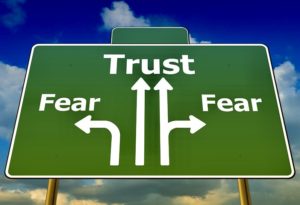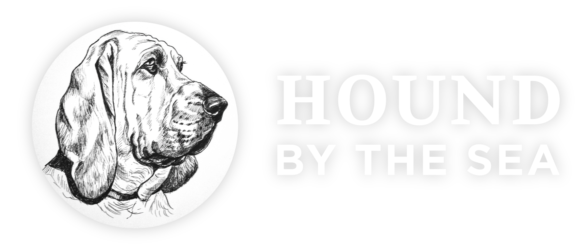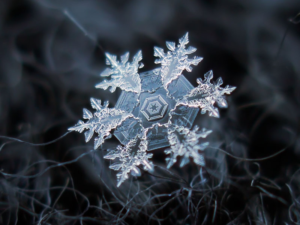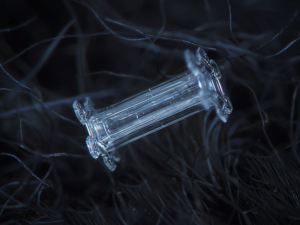What does trust look like? Consider again my first bloodhound, Agatha. The girl with such potential began her life in Las Vegas. She and her mother were picked up together as strays and impounded. When they were scheduled to be euthanized, someone from Nevada SPCA rescued both girls and brought them to their no-kill shelter. Soon after, Agatha’s mother was adopted; but Agatha remained at the SPCA for seven long months.
 Agatha was transferred to Bloodhounds West in Laguna Beach, California—that’s where we found her in 2001. We weren’t aware of her deep-rooted insecurities and the challenges we’d face. Agatha didn’t know me and vice versa. She had been through tough situations that resulted in her “shutting down” emotionally. It soon became clear that many new experiences and unfamiliar sounds terrified her. So we began learning that while having me by her side, she could begin to realize the frightening things weren’t too scary and she could get a bit more brave each day. It was a golden opportunity to prove myself trustworthy so Agatha could learn to trust me. A process that cannot be rushed. It takes dedication and time.
Agatha was transferred to Bloodhounds West in Laguna Beach, California—that’s where we found her in 2001. We weren’t aware of her deep-rooted insecurities and the challenges we’d face. Agatha didn’t know me and vice versa. She had been through tough situations that resulted in her “shutting down” emotionally. It soon became clear that many new experiences and unfamiliar sounds terrified her. So we began learning that while having me by her side, she could begin to realize the frightening things weren’t too scary and she could get a bit more brave each day. It was a golden opportunity to prove myself trustworthy so Agatha could learn to trust me. A process that cannot be rushed. It takes dedication and time.
One by one, we tackled her fear of—
Big boxes
Boats
Bottom drawers, including file cabinet drawers
Buses
Dogs
Large culverts
Noisy, stinky trash trucks
Open stairwells
Trains



 The next time you’re catching one with your tongue, you might stop to consider the long and arduous plight of the snowflake. Those delicate and intricate crystals have traveled many miles before they plummet to the ground alongside their trillions of cousins. And although they fly in multitudes, the word on the snow-slicked street is that no two of those little flakes are alike. Can every snowflake really be different?
The next time you’re catching one with your tongue, you might stop to consider the long and arduous plight of the snowflake. Those delicate and intricate crystals have traveled many miles before they plummet to the ground alongside their trillions of cousins. And although they fly in multitudes, the word on the snow-slicked street is that no two of those little flakes are alike. Can every snowflake really be different? The short answer is yes, snowflakes really are different from one another. You might find some that are exceedingly similar (particularly at the beginning of a flake’s development) but fully formed snowflakes are indeed structurally different, if only by tiniest of degrees.
The short answer is yes, snowflakes really are different from one another. You might find some that are exceedingly similar (particularly at the beginning of a flake’s development) but fully formed snowflakes are indeed structurally different, if only by tiniest of degrees.